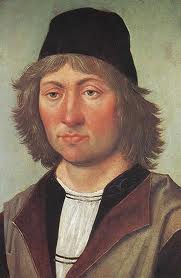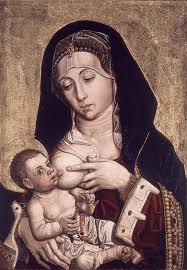Renaissance: Pedro Berruguete
Pedro Berruguete was a Spanish painter whose work is considered to be the bridge between the lingering Gothic and incoming Renaissance styles in Spain during the 15th Century. Pedro Berruguete is famous for his many paintings, but also because he was the father of the celebrated Spanish sculptor, Alonso Berruguete.
Pedro Berruguete (c.1450-1503)

Pedro Berruguete was born in Paredes de Nava in Spain. The details of Pedro Berruguete's artistic training remain mostly unknown. It is thought that Berruguete must have trained with a Flemish artist in his local region of Castilla y León, of which there were many present during this time. However we do know that in around 1477 he travelled to Italy in order to work in the Italian Court at the Ducal Palace in Urbino. Here he also met the Flemish painter Joos van Wassenhove. In Italy, Berruguete would pick up many of the Italian Renaissance painters' techniques. Berruguete learnt from them the skill of being able to manipulate light and space in his paintings.
While in Italy, Pedro Berruguete painted several series of portraits, including the portrait of Pope Sixtus IV, which can now be seen in the Louvre Museum in Paris, and the portrait of Federigo da Montefeltro.
From a document from 1477, it is clear that Alonso Berruguete, Pedro's son, was beginning to work in the Italian Court as well. In this document, Pedro Berruguete is clearly defined as 'Berruguete el viejo, padre de Berruguete' (Berruguete senior, the father of Berruguete).
After the death of the Duke of Urbino around the year of 1482, Pedro Berruguete returned to Spain and settled in Castille. Berruguete developed his style here, obviously incorporating many of the elements that he had learnt from Italy, although he still based his works on his original Flemish style. In fact, Berruguete's style during this period changed a lot, depending mostly on the wishes and individual tastes of his various clients.
Berruguete is documented as being in Toledo in 1483 where he completed the painting of the walls of the chapel in the Cathedral. Pedro Berruguete completed several great works in his hometown as well during this time. By the end of the 15th Century, Berruguete had completed the paintings for the main altarpiece for a church in Paredes de Nava and portraits of Santa Ana and the Virgin Mary. He also painted a portrait for the convent of Saint Thomas in Ávila. Ávila was also the city where Pedro Berruguete began his last work, the main altarpiece for the Cathedral of Ávila. As Berruguete died in 1503, he left this work unfinished. Later, this work was finished by Juan de Borgoña.

Many have considered his portrait of King David for the Church of Saint Eulalia in Paredes de Nava as his greatest work. In this painting, Berruguete returned to painting in an archaic style, employing a very foreground-focused composition with a gold background. However his most famous work is probably the 'Auto de Fe' (Auto-da-fé) in Ávila in which Berruguete managed to capture the drama of the scene, particularly in the faces of the figures in the painting. The medieval scene is painted in a more natural style yet still keeping a complexity to the representation of the different environments.
Berruguete's painting 'La Anunciación' (The Annunciation) which can be found in the 'Cartuja de Miraflores' (Charterhouse of Miraflores) is an excellent example of how Pedro combined Italian light and perspective techniques with Flemish typology and attention to detail. It also displays Pedro Berruguete's love of complex compositions.
Today, many of Pedro Berruguete's works are on display in various museums in Spain, but there are many others which have been lost and destroyed over time. In 2003, to mark the occasion of the 5th centenary of the death of the painter, his hometown of Paredes de Nava held an exhibition of his works and information about his life.
